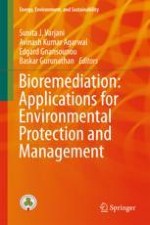2018 | OriginalPaper | Buchkapitel
6. Role of Nanofibers in Bioremediation
verfasst von : Sekar Aiswarya Devi, Muthukumar Harshiny, Manickam Matheswaran
Erschienen in: Bioremediation: Applications for Environmental Protection and Management
Verlag: Springer Singapore
Aktivieren Sie unsere intelligente Suche, um passende Fachinhalte oder Patente zu finden.
Wählen Sie Textabschnitte aus um mit Künstlicher Intelligenz passenden Patente zu finden. powered by
Markieren Sie Textabschnitte, um KI-gestützt weitere passende Inhalte zu finden. powered by
